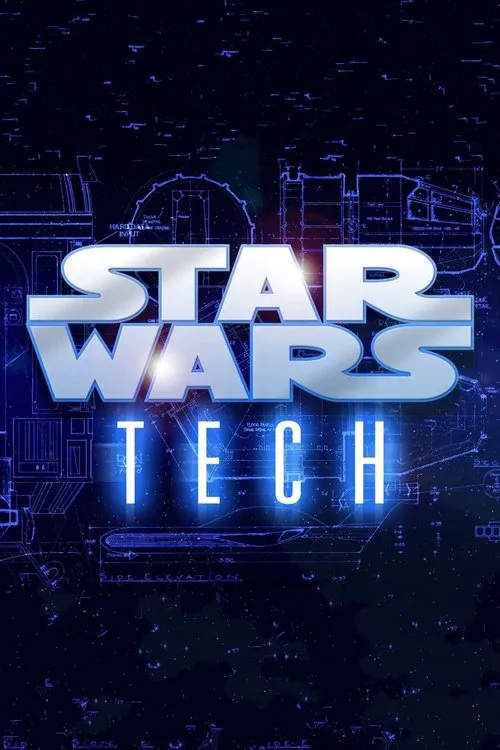Star Wars Tech

Plot
In a galaxy far, far away, the Star Wars universe has been captivating audiences for decades with its array of advanced technology and gadgets. From the Millennium Falcon, Han Solo's iconic spaceship, to Luke Skywalker's lightsaber, the technological wonders of Star Wars have sparked the imagination of fans worldwide. But have you ever wondered if these fantastical devices are grounded in science reality? That's exactly what Star Wars Tech aims to explore, delving into the technical aspects of these technologies and examining their plausibility based on the science we know today. The documentary begins by exploring the physics behind some of Star Wars' most iconic vehicles. One of the first stops is the Millennium Falcon, Han Solo's beloved spaceship that has become an iconic symbol of the franchise. To examine the feasibility of the Falcon's design, the filmmakers consult with engineers and physicists who specialize in aerodynamics. They reveal that while the Falcon's design may not be entirely conventional, its aerodynamic principles are rooted in reality. The ship's distinctive shape is designed to reduce drag, while its engines are capable of producing the kind of thrust required to propel the ship at incredible speeds. Another vehicle that receives attention is the Death Star, the Imperial spacecraft that serves as a symbol of the Empire's power. The filmmakers examine the Death Star's propulsion system, which is powered by a superlaser capable of destroying entire planets. To explore the feasibility of such a device, they consult with experts in the field of high-energy physics. These scientists reveal that, while the concept of a superlaser may seem like science fiction, it is actually based on real-world physics. In fact, scientists have been experimenting with laser technology that is capable of generating enormous amounts of energy, including the National Ignition Facility in California, which uses a powerful laser to create miniature nuclear explosions. In addition to exploring the vehicles of the Star Wars universe, the documentary also delves into the technology behind some of the franchise's most iconic gadgets. One of the most iconic of these is the lightsaber, a device wielded by Jedi and Sith alike. To examine the feasibility of the lightsaber, the filmmakers consult with experts in the field of materials science. They reveal that while the idea of a lightsaber may seem like pure fantasy, the concept of a energy-based cutting device is actually rooted in reality. In fact, scientists have been experimenting with new materials that could potentially be used to create a device that can emit a high-energy beam of light, akin to a lightsaber. Another gadget that receives attention is the Force, a metaphysical energy field that binds the galaxy together and is wielded by the Jedi and Sith alike. To explore the feasibility of the Force, the filmmakers consult with experts in the field of quantum mechanics. These scientists reveal that while the idea of a metaphysical energy field may seem like science fiction, the concept of a field that connects all things in the universe is actually based on real-world physics. In fact, scientists have been experimenting with quantum entanglement, a phenomenon in which particles become connected and can affect each other even when separated by large distances. In addition to exploring the technical aspects of Star Wars technology, the documentary also takes a closer look at some of the franchise's most iconic characters. One of the characters that receives attention is Darth Vader, the infamous Sith Lord who serves as a symbol of the Empire's power. To examine the feasibility of Darth Vader's armor, the filmmakers consult with experts in the field of prosthetics. These scientists reveal that while the idea of a suit of armor that grants its wearer superhuman strength and abilities may seem like science fiction, the technology behind the armor is actually rooted in reality. In fact, scientists have been experimenting with exoskeletons that can amplify human strength and mobility, and have even developed suits of armor that can provide protection against extreme forces and temperatures. The documentary also examines the role that science has played in shaping the Star Wars universe. One notable example is the use of sound design in the franchise. To explore the science behind sound in the Star Wars universe, the filmmakers consult with experts in the field of audio engineering. These scientists reveal that while the sounds of alien planets and spaceships may seem like pure fantasy, they are actually based on real-world physics. In fact, scientists have been experimenting with new techniques for creating realistic sound effects, and have even developed software that can generate sounds that are indistinguishable from reality. In conclusion, Star Wars Tech is a fascinating look into the technical aspects of the Star Wars universe. By consulting with leading scientists in various fields, the filmmakers reveal that many of the technologies and gadgets of Star Wars are actually grounded in science reality. From the physics behind vehicles and engines, to the materials science behind lightsabers and the Force, the documentary takes a closer look at the real-world technology that underlies the franchise's fantastical universe. Whether you're a fan of science fiction or simply a fan of the Star Wars universe, Star Wars Tech is a must-see that will leave you with a newfound appreciation for the science behind the fantasy.
Reviews
Recommendations



